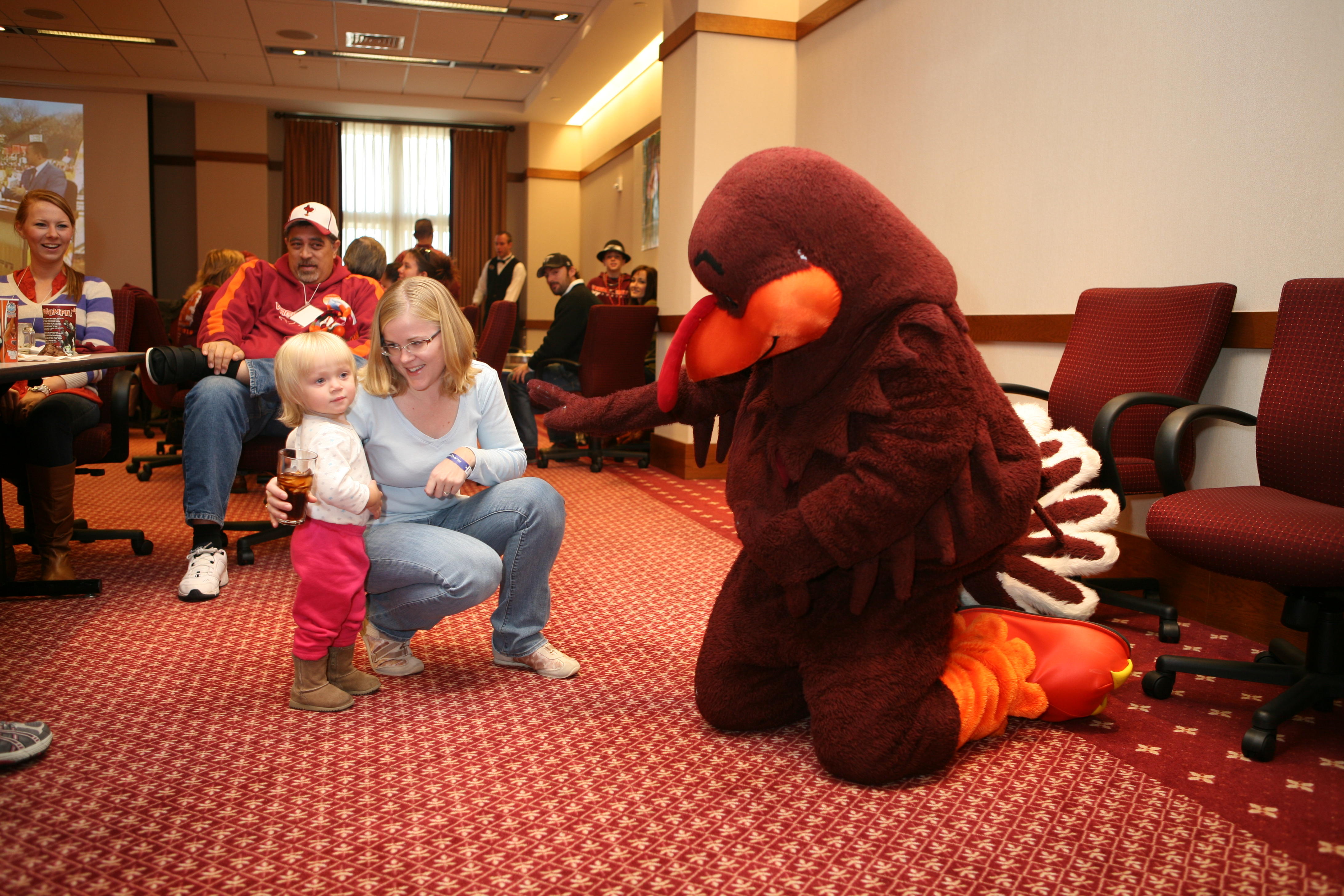Understanding, preventing common childhood phobias investigated at Child Study Center

While the HokieBird seems friendly to most people, some children may develop an intense phobia after encountering the sociable Virginia Tech mascot.
In 2010, the National Institute of Mental Health reported that 16.7 percent of children between the ages of 13 and 14 experience specific phobias. Researchers at the Child Study Center work on assessing, treating, preventing, and understanding the problems in childhood and adolescence. For example, a current project focuses on treating specific phobias like helping a child conquer his or her fear of costumed characters.
“I received my Ph.D in 1971 and arrived at Virginia Tech in 1980,” said Thomas Ollendick, University Distinguished Professor of Psychology in the College of Science and center director. “We have been working on these projects for the past 30 years. Science is a slow but most rewarding process.“
The National Institute of Mental Health funded both the treatment of specific phobias and treatment of oppositional youth projects for about $1.4 million each. “In these projects we are developing evidence-based assessment and treatment practices,” Ollendick said. “We are the only place in the United States currently conducting research on our treatment protocols, and we are hopeful that our developments will be adopted by the professional community in the years ahead.”
The goal of the child phobia project is to treat children who have a specific phobia or fear. The study was opened to families with children between the ages of seven and 14 who meet the criteria. The researchers assessed the children prior to, during, and after treatment.
“The most common phobias are dogs, storms, and the dark,” Ollendick said. “Phobias originate due to negative learning experiences for the most part. Children become petrified of the phobic object and their fears greatly interfere with their development and normal life experiences.”
The treatment for phobias is based on cognitive-behavioral theory principles in which the parents and the child build skills through education, modeling, and gradual exposure to the phobia. Phobia treatment sessions in the Child Study Center usually take three hours.
“[The sessions] consist of intensive exposure to the phobic stimulus, the correction of dysfunctional thoughts about the phobic objects, and the acquisition of skills in being able to interact or deal with the phobic object,” Ollendick said. “It is much more that traditional talk therapy, and it works.”
In the oppositional youth project, researchers examined two different treatments for children between the ages of eight and 14 with operational defiant disorder. The Collaborative Problem Solving, or CPS, approach was based on teaching parents how to help their child identify and regulate his or her emotions. This type of treatment allowed the parents and child to work together to solve the behavioral problems. In the Parent Management Training approach, or PMT, researchers taught parents how to react consistently to the child’s positive and negative behaviors. The negative behaviors often include temper outbursts, continual stubbornness, opposition to directions, and verbal or physical aggression.
“Although both [treatments] involve the parents, PMT is more parent-focused and CPS is more child-focused,” Ollendick said. “To date, both appear to be working equally well. This is the first clinical trial comparing these two interventions.”
Krystal Lewis from Brentwood, N.Y., a graduate student studying clinical psychology in the College of Science, is working on bibliotherapy treatment for nighttime fears. The study focuses on children aged five to seven who have an intense fear of the dark or other nighttime fears. Through bibliotherapy, Lewis uses age-appropriate books to treat the fears.
“For this project, it’s nice to be able to work with children and their parents toward fixing the problem,” Lewis said. Working on this project in the Child Study Center has allowed her to gain experience surrounded by other graduate students. “I love the environment, and everyone gets along really well.”
Other projects at the Child Study Center include studying the transmission of anxiety from parent to child, treatment of oppositional youth who are also generally anxious and show emotional regulation difficulties, Attention Deficit Hyperactivity Disorder (ADHD) children who have specific phobias, and ADHD youth who also have anxiety and oppositional problems.
“All of these [projects] are led by my doctoral students, and they are doing some incredibly good work,” Ollendick said. “Anxiety disorders, ADHD, and oppositional, negativistic behaviors are very common in youth, affecting up to 25 percent of children and adolescents. We desperately need to develop effective programs to deal with these common problems.”
The research at the Child Study Center has been evolving and changing as the researchers learn from and build on their work. “The projects have taken various twists and turns over the years,” Ollendick said. “Some of our ideas ‘pan out’ whereas others do not. It is a self-correcting process.”
Some of the researchers’studies are the basis for clinical trials in Sweden, Denmark, England, China, Japan, Argentina, Colombia, Australia, and other countries. “We think we are making a difference in the lives of young people throughout the world.”
By Lauren Marshall from Marshall, Va., a senior majoring in communication and human development in the College of Liberal Arts and Human Sciences.









